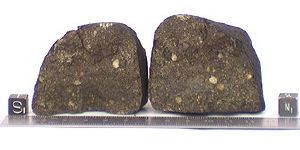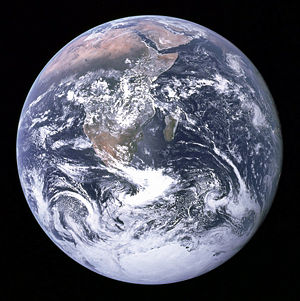Geochemistry

The field of geochemistry involves study of the chemical composition of Earth and other parts of the universe, and the chemical processes and reactions that take place within them. It also investigates the cycles of matter and energy that transport the Earth's chemical components across time and space.
Scientific studies in geochemistry provide knowledge about Earth and its history, and they help us understand some of the processes involved in the formation of valuable mineral deposits and in changing the planet's climate. Geochemical knowledge is also useful when making plans to dispose of toxic wastes in a manner that causes least harm to humans and the environment.
Mineralogists Victor Goldschmidt and Vladimir Vernadsky are generally considered the founders of modern geochemistry. Goldschmidt enunciated many of the ideas in this field in a series of publications (from 1922) under the title Geochemische Verteilungsgesetze der Elemente. Vernadsky's book on geochemistry was published in Russian in 1924.
Subfields
Geochemistry includes the following major subfields and areas of study.
- Cosmochemistry: It deals with analysis of the distribution of elements and their isotopes in the cosmos.
- Examination of the distribution and movements of elements in different parts of Earth (the crust, mantle, hydrosphere, and so forth) and in minerals, with the goal of determining the underlying system of distribution and movement.
- Isotope geochemistry: It involves determining the distribution and concentrations of the isotopes of elements in terrestrial and extraterrestrial materials. The knowledge gained may suggest the age of these materials and the historical changes they have gone through.
- Organic geochemistry: This area involves studying the role of carbon-containing compounds and processes derived from living or once-living organisms. This area of geochemistry helps us understand how living things affect chemical cycles, and the formation of petroleum, coal, natural gas, and ores.
- Regional, environmental and exploration geochemistry: It involves studies related to environmental, hydrological, and mineral exploration.
Chemical characteristics
The more common constituents of rocks on Earth are oxides. The main exceptions to oxides are compounds of chlorine, sulfur, and fluorine.
According to calculations by F. W. Clarke, a little more than 47 percent of Earth's crust consists of oxygen. It occurs mainly in the form of oxides, particularly silica, alumina, iron oxides, lime, magnesia, potash, and soda. Silica functions principally as an acid, forming silicates, and the most common minerals of igneous rocks are silicates. From a computation based on 1,672 analyses of all kinds of rocks, Clarke arrived at the following values for the average percentage composition: SiO2=59.71; Al2O3=15.41; Fe2O3=2.63; FeO=3.52; MgO=4.36; CaO=4.90; Na2O=3.55; K2O=2.80; H2O=1.52; TiO2=0.60; and P2O5=0.22. (The total of these is 99.22 percent). All other constituents occur in very small quantities, usually much less than 1 percent.
The oxides combine in various ways. Some examples are given below.
- Potash and soda combine to produce mostly feldspars, but may also produce nepheline, leucite, and muscovite.
- Phosphoric acid with lime forms apatite.
- Titanium dioxide with ferrous oxide gives rise to ilmenite.
- Magnesia and iron oxides with silica crystallize as olivine or enstatite, or with alumina and lime form the complex ferro-magnesian silicates (such as the pyroxenes, amphiboles, and biotites).
- Any silica in excess of that required to neutralize the bases separates out as quartz; excess alumina crystallizes as corundum.
These combinations must be regarded only as general tendencies, for there are numerous exceptions to the rules.
Mineral constitution
One may say that except in acid or siliceous rocks containing 66 percent and more of silica, quartz will not be abundant. In basic rocks (containing 60 percent of silica or less), quartz is rare and accidental. If magnesia and iron be above the average while silica is low olivine may be expected; where silica is present in greater quantity over ferro-magnesian minerals, such as augite, hornblende, enstatite or biotite, occur rather than olivine. Unless potash is high and silica relatively low leucite will not be present, for leucite does not occur with free quartz. Nepheline, likewise, is usually found in rocks with much soda and comparatively little silica. With high alcalis soda-bearing pyroxenes and amphiboles may be present. The lower the percentage of silica and the alkalis the greater is the prevalence of t lime felspar as contracted with soda or potash felspar. Clarke has calculated the relative abundance of the principal rock-forming minerals with the following results: Apatite=0.6, titanium minerals=1.5, quartz=12.0, felspars=59.5, biotite=3.8, hornblende and pyroxene=16.8, total=94.2%. This, however, can only be a rough approximation. The other determining factor, namely the physical conditions attending consolidation, plays on the whole a smaller part, yet is by no means negligible, as a few instances will prove. There are certain minerals which are practically confined to deep-seated intrusive rocks, e.g. microcline, muscovite, diallage. Leucite is very rare in plutonic masses; many minerals have special peculiarities in microscopic character according to whether they crystallized in depth or near the surface, e.g. hypersthene, orthoclase, quartz. There are some curious instances of rocks having the same chemical composition but consisting of entirely different minerals, e.g. the hornblendite of Gran, in Norway, containing only hornblende, has the same composition as some of the camptonites of the same locality which contain felspar and hornblende of a different variety. In this connection we may repeat what has been said above about the corrosion of porphyritic minerals in igneous rocks. In rhyolites and trachytes early crystals of hornblende and biotite may be found in great numbers partially converted into augite and magnetite. The hornblende and biotite were stable under the pressures and other conditions which obtained below the surface, but unstable at higher levels. In the ground-mass of these rocks augite is almost universally present. But the plutonic representatives of the same magma, granite and syenite contain biotite and hornblende far more commonly than augite.
Acid, intermediate, and basic igneous rocks
Rocks that contain most silica and on crystallizing yield free quartz are placed in a group generally designated the "acid" rocks. Those rocks that contain least silica and most magnesia and iron, so that quartz is absent while olivine is usually abundant, form the "basic" group. The "intermediate" rocks include those which are characterized by the general absence of both quartz and olivine. An important subdivision of these contains a very high percentage of alkalis, especially soda, and consequently has minerals such as nepheline and leucite not common in other rocks. It is often separated from the others as the "alkali" or "soda" rocks, and there is a corresponding series of basic rocks. Lastly a small sub-group rich in olivine and without felspar has been called the "ultrabasic" rocks. They have very low percentages of silica but high proportions of iron and magnesia.
Except for these last practically all rocks contain felspars or felspathoid minerals. In the acid rocks the common felspars are orthoclase, which perthite, microcline, oligoclase, all having much silica and alkalis. In the basic rocks labradorite, anorthite and bytownite prevail, being rich in lime and poor in silica, potash and soda. Augite is the commonest ferro-magnesian of the basic rocks, but biotite and hornblende are on the whole more frequent in the acid.
| Commonest Minerals | Acid | Intermediate | Basic | Ultrabasic | |
|---|---|---|---|---|---|
| Quartz Orthoclase (and Oligoclase), Mica, Hornblende, Augite |
Little or no Quartz: Orthoclase hornblende, Augite, Biotite |
Little or no Quartz: Plagioclase Hornblende, Augite, Biotite |
No Quartz Plagioclase Augite, Olivine |
No Felspar Augite, Hornblende, Olivine | |
| Plutonic or Abyssal type | Granite | Syenite | Diorite | Gabbro | Peridotite |
| Intrusive or Hypabyssal type | Quartz-porphyry | Orthoclase-porphyry | Porphyrite | Dolerite | Picrite |
| Lavas or Effusive type | Rhyolite, Obsidian | Trachyte | Andesite | Basalt | Limburgite |
Rocks that contain leucite or nepheline, either partly or wholly replacing felspar, are not included in this table. They are essentially of intermediate or of basic character. We might in consequence regard them as varieties of syenite, diorite, gabbro, etc., in which felspathoid minerals occur, and indeed there are many transitions between syenites of ordinary type and nepheline — or leucite — syenite, and between gabbro or dolerite and theralite or essexite. But as many minerals develop in these "alcali" rocks which are uncommon elsewhere, it is convenient in a purely formal classification like that which is outlined here to treat the whole assemblage as a distinct series.
| Commonest Minerals | Alkali Felspar, Nepheline or Leucite, Augite, Hornblend, Biotite | Soda Lime Felspar, Nepheline or Leucite, Augite, Hornblende (Olivine) | Nepheline or Leucite, Augite, Hornblende, Olivine |
|---|---|---|---|
| Plutonic type | Nepheline-syenite, Leucite-syenite, Nepheline-porphyry | Essexite and Theralite | Ijolite and Missourite |
| Effusive type or Lavas | Phonolite, Leucitophyre | Tephrite and Basanite | Nepheline-basalt, Leucite-basalt |
This classification is based essentially on the mineralogical constitution of the igneous rocks. Any chemical distinctions between the different groups, though implied, are relegated to a subordinate position. It is admittedly artificial by it has grown up with the grown of the science and is still adopted as the basis on which more minute subdivisions are erected. The subdivisions are by no means of equal value. The syenites, for example, and the peridotites, are far less important than the granites, diorites and gabbros. Moreover, the effusive andesites do not always correspond to the plutonic diorites but partly also to the gabbros. As the different kinds of rock, regarded as aggregates of minerals, pass gradually into one another, transitional types are very common and are often so important as to receive special names. The quartz-syenites and nordmarkites may be interposed between granite and syenite, the tonalites and adamellites between granite and diorite, the monzoaites between syenite and diorite, norites and hyperites between diorite and gabbro, and so on.
See also
- Astrochemistry
- Earth
- Geology
- Petroleum geology
- Petrology
- Rock (geology)
ReferencesISBN links support NWE through referral fees
- Holland, H.D., & Turekian, K.K. (2004). Treatise on Geochemistry. 9 Volumes. Elsevier
- Marshall, C., & Fairbridge, R. (2006). Encyclopedia of Geochemistry. ISBN 1-4020-4496-8. Berlin: Springer.
- Bernard Gunn: The Geochemistry of Igneous Rocks
- Gunter Faure: Principles of Isotope Geochemistry., ISBN 0-471-86412-9
- Cl.J. Allègre, G. Michard, R.N. Varney, Introduction to Geochemistry, ISBN 90-277-0497-X
- W.M. White: Geochemistry (Free Download)
- A.A. Levinson: Introduction to Exploration Geochemistry, ISBN: 0915834049
- Victor Moritz Goldschmidt: Father of Modern Geochemistry by Brian Mason (ISBN 0-941809-03-X)
- Essays on Geochemistry & the Biosphere, tr. Olga Barash, Santa Fe, NM, Synergetic Press, ISBN 0-907791-36-0, 2006
External links
This article incorporates text from the Encyclopædia Britannica Eleventh Edition, a publication now in the public domain.
Credits
New World Encyclopedia writers and editors rewrote and completed the Wikipedia article in accordance with New World Encyclopedia standards. This article abides by terms of the Creative Commons CC-by-sa 3.0 License (CC-by-sa), which may be used and disseminated with proper attribution. Credit is due under the terms of this license that can reference both the New World Encyclopedia contributors and the selfless volunteer contributors of the Wikimedia Foundation. To cite this article click here for a list of acceptable citing formats.The history of earlier contributions by wikipedians is accessible to researchers here:
The history of this article since it was imported to New World Encyclopedia:
Note: Some restrictions may apply to use of individual images which are separately licensed.
